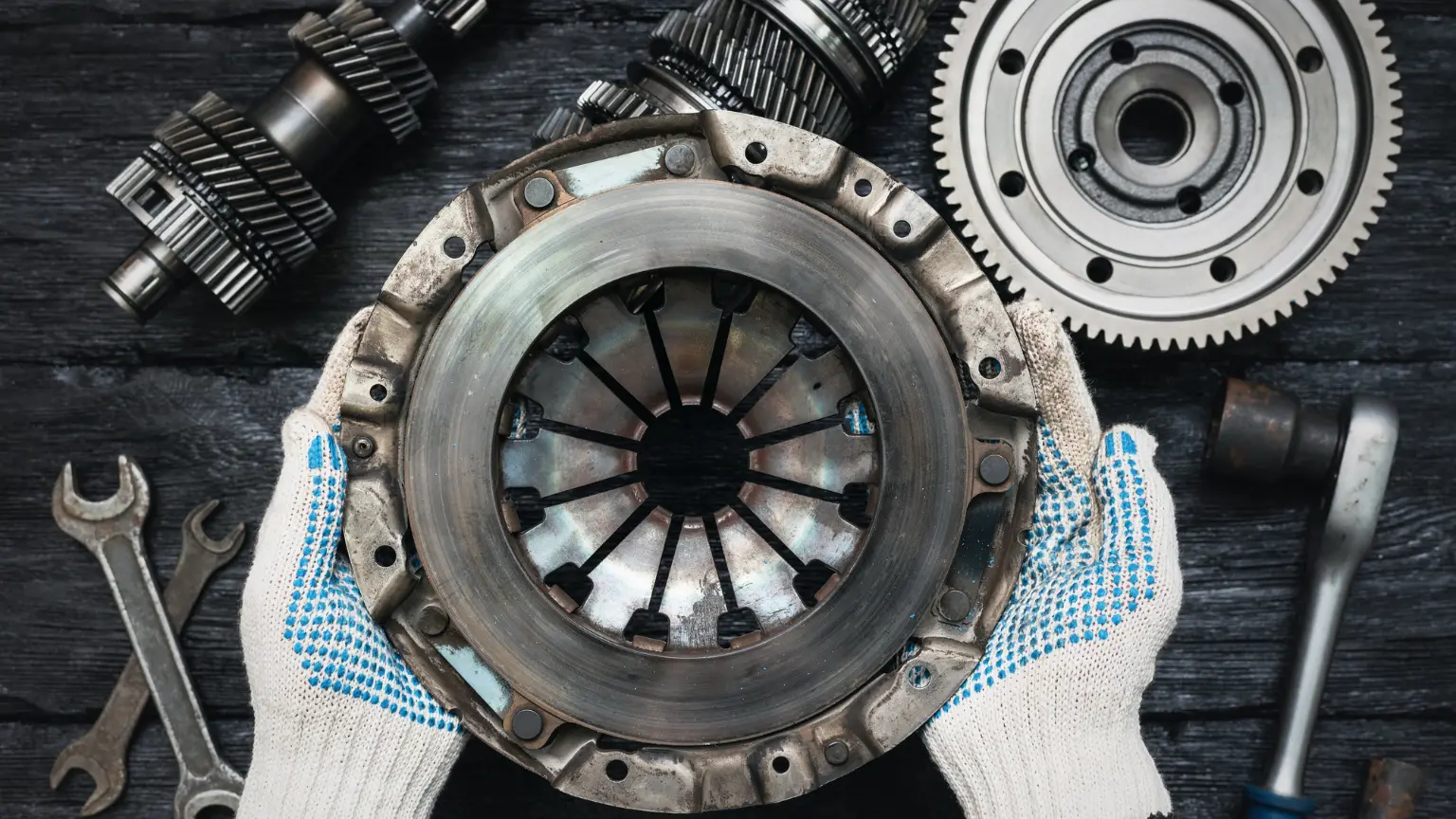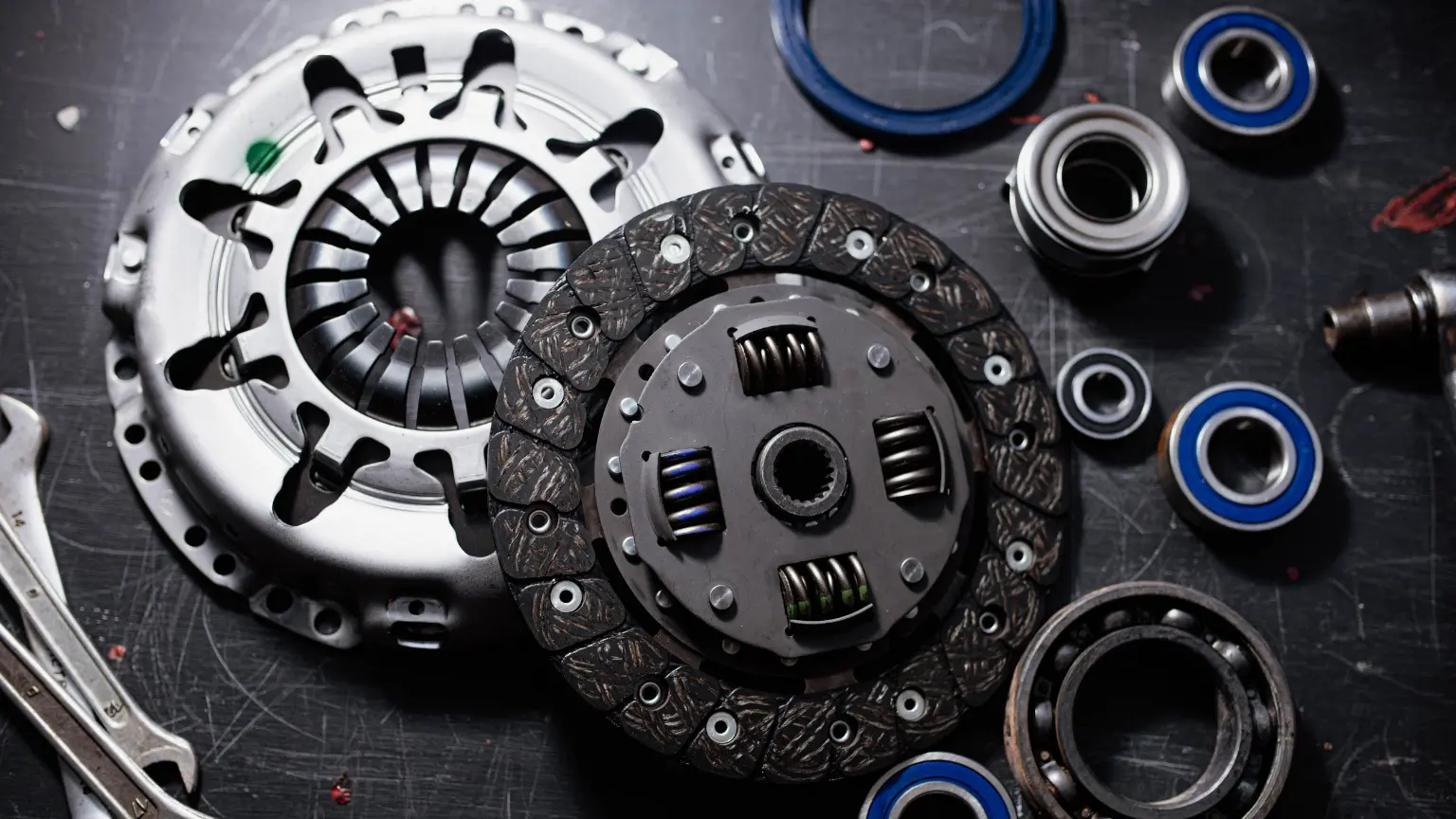Quick Fixes for Slipping Transmissions: What Works?
Transmission slipping occurs when gears don’t engage, causing high revs and delayed acceleration. Learn key symptoms and fixes—from fluid checks and band tweaks to additives and pro service.
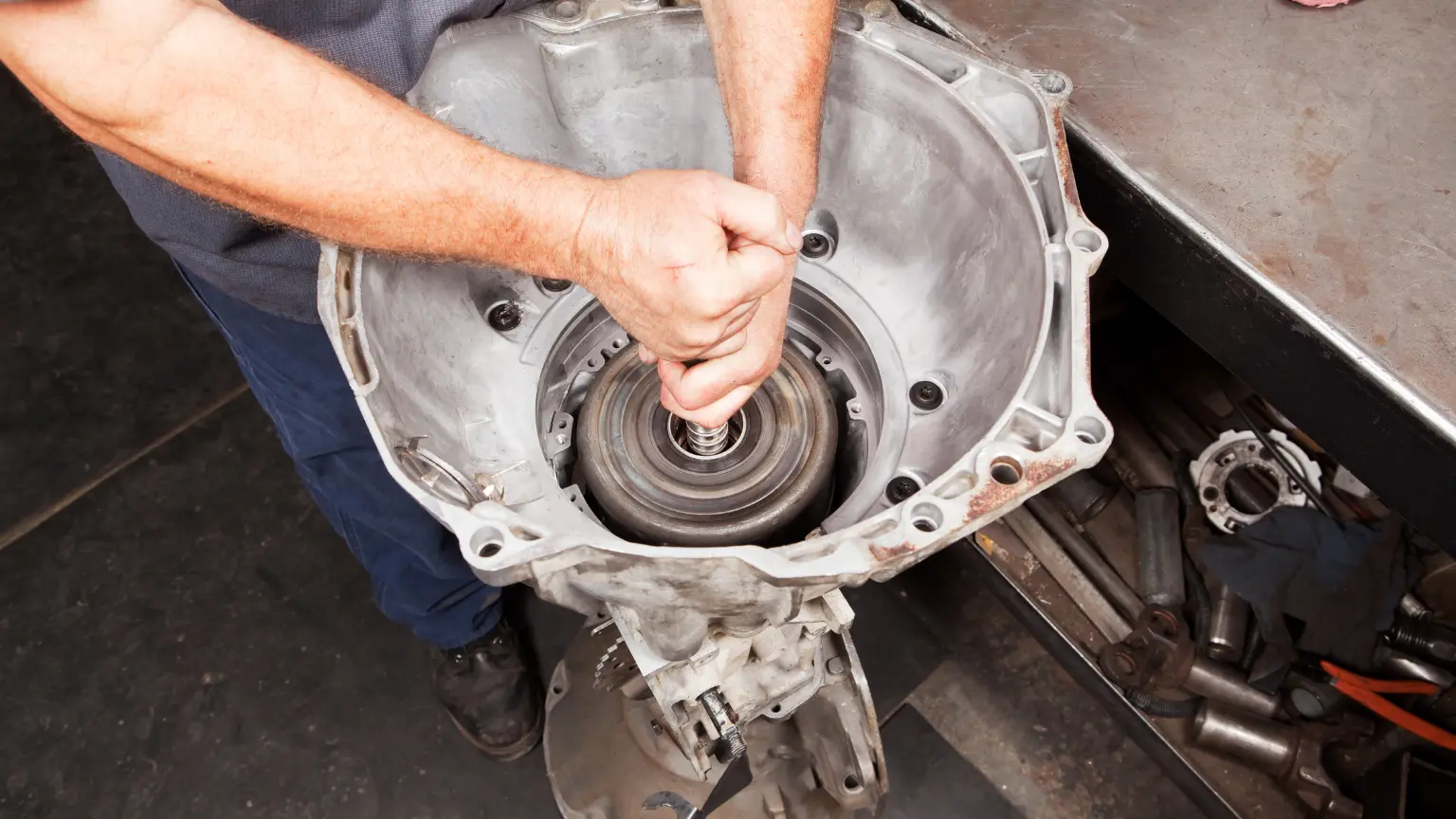
Transmission slipping occurs when your car's gearbox does not engage properly, causing the engine to rev without effectively transferring power to the wheels. This issue can manifest in several ways: sudden jerking during gear changes, unusually high RPMs before shifting occurs, and a noticeable delay in vehicle acceleration. Recognizing these symptoms early can prevent more severe damage to your car's transmission.
How to Fix Slipping Gears in Cars
Checking and Refilling Transmission Fluid Levels
One of the most straightforward and effective ways to fix transmission slipping issues is to check and refill the fluid. Checking transmission fluid levels, identifying leaks, and performing fluid flushes are initial steps to address slipping transmissions. Low fluid levels can cause slipping due to insufficient lubrication and the hydraulic pressure needed for proper transmission operation. It’s essential to use the correct fluid type as specified by your vehicle’s manufacturer to ensure optimal performance and avoid further issues.
Flushing Old or Contaminated Transmission Fluid
Over time, it can degrade or become contaminated, which impedes its effectiveness and leads to slipping transmission fixes. Flushing out the old fluid and replacing it with fresh fluid can rejuvenate your vehicle's transmission, enhance smooth gear shifts, and extend its life. This process involves removing the old fluid, cleaning the transmission, and refilling it with new fluid, ensuring all contaminants are removed.
Tightening or Adjusting Transmission Bands
Transmission bands play a crucial role in the operation of automatic transmissions by linking the gears together during shifts. If these bands are too loose, they can cause slipping. Adjusting or tightening these bands can correct the slip and improve the overall efficiency of the transmission. This adjustment is a precise task that a gearbox repair expert should ideally perform to ensure it is done correctly. One must know the situations where professional intervention is recommended for diagnosing and fixing slipping transmissions.
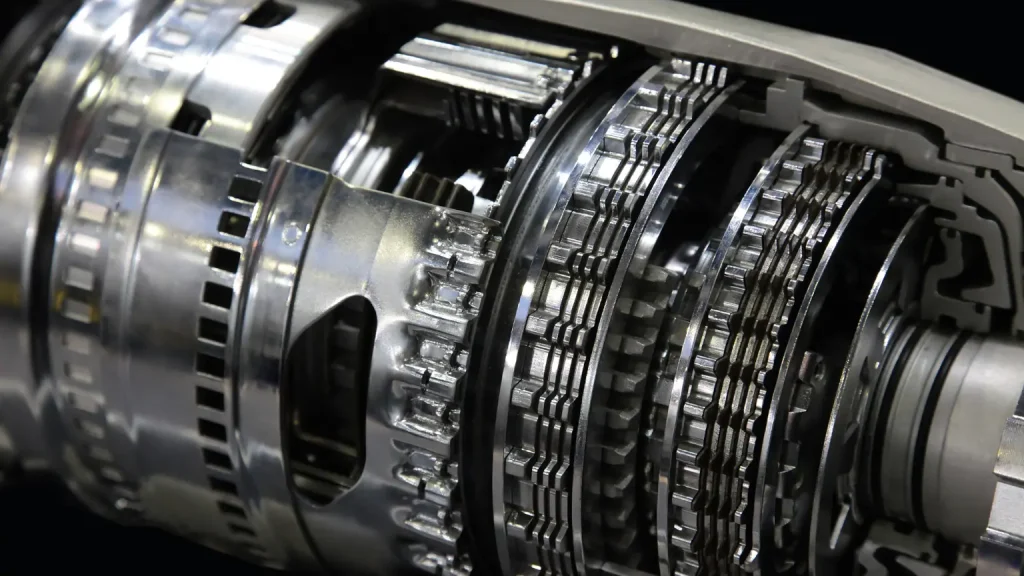
Transmission Additives: Do They Work?
How It Addresses Slipping
They work by filling in the gaps and smoothing out imperfections on the metal surfaces of the transmission's interior. This can significantly reduce the occurrence of slipping by increasing the friction needed to maintain gear engagement. While effective in the short term, these additives should not be considered a permanent fix but rather a part of a broader maintenance strategy.
Types of Additives
Among the various types of additives, seal conditioners and friction modifiers stand out as two essential categories, each uniquely contributing to the transmission's longevity and functionality. Understanding these can help vehicle owners make informed decisions about their maintenance strategies:
- Seal Conditioners: Over time, seals can harden, shrink, and lose their flexibility due to heat, pressure, and aging, leading to leaks and reduced hydraulic pressure. These issues often result in slipping gears and erratic performance. Seal conditioners work by softening and expanding the seals, restoring their elasticity and ability to maintain a tight seal. This rejuvenation process helps prevent leaks, ensuring the transmission fluid stays at the optimal level for efficient operation. Additionally, by keeping the right hydraulic pressure, seal conditioners reduce the stress on the transmission, extending its lifespan and improving its overall reliability.
- Friction Modifiers: Friction modifiers are designed to optimize the interaction between moving parts within the transmission system. These additives adjust the chemical properties of the transmission fluid, improving its lubricating ability and enhancing its frictional characteristics. This is crucial for preventing gear slipping, which can occur when the fluid loses its grip between the clutch plates. By creating a better balance between lubrication and friction, friction modifiers ensure smoother gear shifts and reduce wear on internal components. They also help maintain consistent performance under varying operating conditions, such as during high-speed driving or heavy loads. This results in improved efficiency, better fuel economy, and an extended lifespan for the transmission.
Both are invaluable tools in maintaining a vehicle's transmission system. While seal conditioners focus on preserving the integrity of seals, friction modifiers enhance the fluid's performance properties, creating a holistic approach to transmission care.
When Additives Are Effective vs. When They Fail
Additives are most effective in transmissions where the slipping is due to aged fluid or minor internal wear. In such cases, enhanced lubrication and improved seal integrity can make a noticeable difference in performance. Conversely, additives will likely fail in transmissions with severe mechanical faults, such as broken gears or heavily worn clutches.
Choosing the Right Transmission Treatment
It's crucial to consult a certified transmission mechanic who can recommend the best product based on a thorough diagnosis of the transmission's health. This ensures that the additive complements the vehicle's specific needs and provides the most benefit without causing unintended complications.
Car Transmission Troubleshooting
The inspection and adjustment of key transmission components, such as transmission bands, solenoids, and the torque converter, are necessary to mitigate slipping issues.
Worn Clutch Plates and Valve Body Problems
In automatic transmissions, clutch plates are essential for the smooth transition between gears. When these plates wear out, they lose their ability to hold onto the gears during shifts, resulting in slipping. If the plates are worn, replacing them is necessary to regain proper transmission function. The valve body controls the automatic transmission, directing hydraulic fluid to various valves to engage proper gears. Problems with the valve body can disrupt this flow, causing slipping and other shifting issues. Repairing a damaged valve body often involves cleaning or replacing the valves and springs to ensure smooth operation and fluid distribution within the transmission.
Solenoid Malfunctions and Hydraulic Pressure Failures
Solenoids control fluid flow within the transmission, affecting hydraulic pressure and gear shifting. Malfunctions in these components can lead to erratic shifting or slipping. Diagnosing solenoid issues typically involves electronic testing to check their operation. If a solenoid is found to be faulty, repairing or replacing it will help restore the correct transmission operation.
Diagnosing Manual Gearbox Synchronization Issues
When these synchronizers wear out, it can lead to grinding noises and difficulty in shifting, known as gearbox slipping. A thorough inspection by a trained mechanic can confirm if the synchronizers are the issue. Depending on the severity, this might require replacing the worn parts or overhauling the gearbox to ensure seamless transitions.
Transmission Control Module (TCM) Updates
In today’s vehicles, the transmission control module (TCM) plays a crucial role in controlling gear shifts and optimizing overall transmission performance. The TCM uses sensors and software algorithms to determine the optimal timing and pressure for each shift, adapting to driving conditions and driver habits. However, outdated or faulty TCM software can cause improper gear engagement, delayed shifts, or even contribute to transmission slipping. Updating or reprogramming the TCM can resolve these issues by installing the latest manufacturer-recommended software, which often includes bug fixes and performance enhancements. This process can restore proper communication between the engine and transmission, resulting in smoother gear changes and improved reliability. For many modern cars, a TCM update is a cost-effective solution that can address slipping problems without major mechanical repairs. Always consult a qualified technician or dealership for TCM updates, as specialized diagnostic equipment and expertise are required for safe and accurate programming.
Specialized Solutions for Truck Transmissions
Addressing Heavy Loads and Towing Strain
Trucks are often subject to extreme demands due to heavy loads and frequent towing, exacerbating transmission slipping. To combat this, it’s crucial to ensure the transmission is robust and adequately maintained. Regular checks and adjustments can help manage the additional strain. Enhancing the transmission with upgraded components that handle higher torque and stress can significantly improve durability and performance.
Installing Transmission Coolers for Heat Management
Excessive heat is a major enemy of transmission longevity, especially in trucks that haul heavy loads or tow regularly. Installing a transmission cooler can be a game-changer in such cases, effectively managing the heat generated during operation. Here’s how transmission coolers make a significant difference:
- Reduction of Operating Temperatures: When transmission fluid flows through the cooler, it releases heat more effectively than it could through the transmission alone. This cooling effect is especially beneficial when transmission is under significant stress, such as towing, climbing steep grades, or driving in hot climates. Lower operating temperatures help the transmission fluid retain its viscosity and lubricating properties, ensuring consistent performance. By preventing overheating, coolers can significantly reduce the risk of transmission failure, making them a crucial addition to vehicles subjected to heavy-duty tasks.
- Enhanced Fluid Longevity: Heat accelerates the breakdown of transmission fluid, reducing its effectiveness in lubricating and protecting the transmission components. With a transmission cooler installed, the fluid remains at a lower temperature, slowing its degradation and extending its useful life. This ensures that the fluid maintains its hydraulic properties, facilitating smooth gear shifts and protecting against wear and tear for a longer period. Cooler fluid also reduces the frequency of fluid changes, leading to cost savings and reduced maintenance efforts. This enhanced fluid longevity translates to better reliability and overall performance for drivers who depend on their vehicles for heavy loads or frequent towing.
- Prevention of Internal Damage: Overheating can cause significant damage to critical transmission components, including seals, clutches, and bands. These parts are designed to function optimally within a specific temperature range, and excessive heat can cause them to warp, crack, or degrade prematurely. Transmission coolers help protect these internal components from heat-related damage by maintaining a cooler operating environment. This not only improves the durability of the transmission but also reduces the likelihood of costly replacements. Also, a properly cooled transmission operates with greater stability, minimizing the chances of gear slipping and other performance issues.
- Improved Vehicle Performance: A transmission within its ideal temperature range delivers smoother and more reliable performance. Transmission coolers help achieve this by keeping the fluid and components cooler, leading to more efficient gear shifts and reduced friction. For trucks and other heavy-duty vehicles, this means improved towing capacity, better fuel efficiency, and reduced stress on the engine. In demanding situations, such as hauling heavy loads or navigating challenging terrains, a cooler transmission can perform more consistently, ensuring the vehicle meets the demands without faltering.
Managing heat more effectively protects critical components, extends fluid life, and ensures optimal performance, particularly for vehicles used in demanding applications. This not only enhances the driving experience but also reduces the risk of downtime, making it an indispensable upgrade for heavy-duty vehicles.
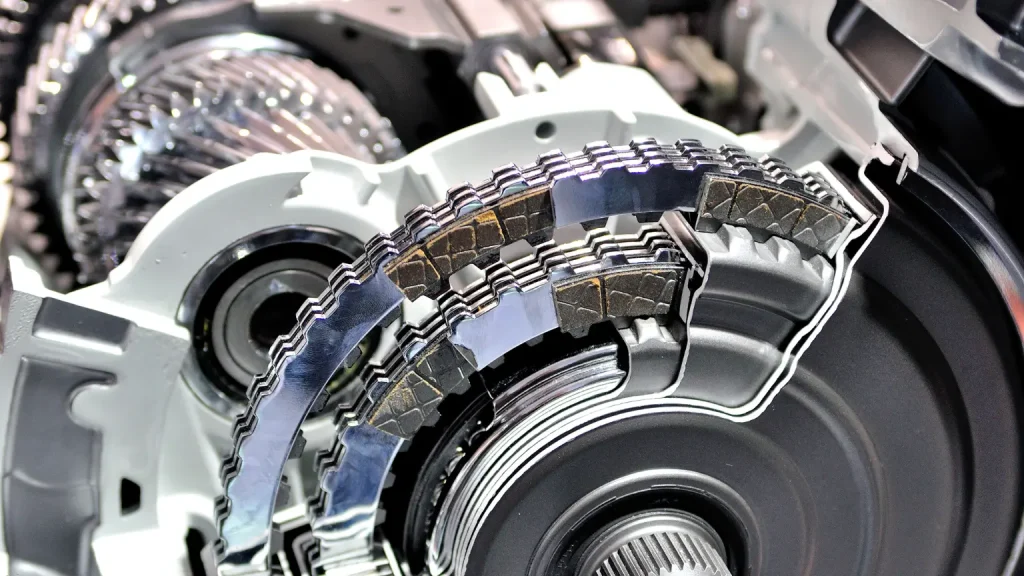
Upgrading Components for Long-Term Durability
In addition to installing coolers, upgrading other transmission components to more durable alternatives can also benefit truck transmissions. These upgrades may include higher-grade metals for gears and bearings, as well as more resilient seals and gaskets designed to withstand the rigors of heavy-duty use. Such enhancements help ensure that the transmission can handle the increased demands without compromising reliability or performance.
DIY Fixes vs. Professional Repairs and When to Seek Help
Recognizing When a Quick Fix Is Enough
Sometimes, vehicle owners can handle minor transmission issues like low fluid levels or the need for a simple fluid change themselves. These DIY fixes are adequate for mild symptoms, and the transmission slipping solutions are straightforward. Understanding when a problem can be resolved with a home remedy saves owners money and time. However, it’s vital to clearly grasp one’s mechanical skill level and the scope of the issue at hand.
Identifying Problems That Require Professional Diagnosis
More complex problems, such as internal damage to the transmission or electronic system failures, necessitate a professional diagnosis. These issues often require specialized tools and expertise to identify and resolve accurately. Symptoms that persist after initial DIY attempts or those that are severe from the outset should be addressed by a certified transmission mechanic. Their expertise ensures that the underlying problem is thoroughly evaluated and correctly fixed. Recommendations from friends, online reviews, and professional associations can help find reputable local transmission services offering high-quality work and trustworthy advice.
Evaluating Transmission Repair vs. Replacement Costs
When facing transmission issues, one must consider whether to repair or replace the transmission. This decision should be based on a cost-benefit analysis that considers the vehicle's age, the cost of repairs, and the potential longevity of the vehicle after the repairs. Professionals can provide detailed estimates and guidance on the most economically sensible option: repair or full replacement.
Questions to Ask Your Transmission Repair Expert
Before committing to a repair plan, it’s wise to ask detailed questions about the diagnosis, the proposed solution, and the expected outcome. Inquiring about warranties on the work performed, the repair time frame, and any potential future issues that might arise post-repair is also crucial. Clear communication with your repair expert will help ensure that you are making an informed decision and understand all aspects of the repair process.
Warranty Options
Many repair shops offer warranties on transmission repairs and replacements, providing an added layer of security for vehicle owners. These warranties can vary widely, ranging from 30 days to several years, and cover different aspects of the work performed. Comprehending the warranty details can influence the decision-making process, as it adds value to the service and offers peace of mind regarding the longevity and reliability of the repair.
Tips for Extending Transmission Life After Repairs
Preventive Strategies for Transmission Health and Longevity
Proactively maintaining your vehicle’s transmission is the most effective way to prevent slipping and ensure long-term reliability. One of the most impactful strategies is adhering to a regular maintenance schedule as outlined in your vehicle’s owner's manual. This includes not only timely fluid changes, but also periodic inspections by a qualified technician who can catch early signs of wear or malfunction before they escalate into serious problems. Always address minor issues promptly rather than waiting for them to worsen. Early intervention can prevent costly repairs and extend the transmission’s lifespan. Using only manufacturer-recommended fluids and parts is another essential practice, as incompatible products can cause premature wear or even damage. For owners of modern vehicles, leveraging onboard diagnostics and scheduling periodic electronic system checks can help identify subtle performance changes before they develop into major faults. Staying informed about manufacturer recalls, software updates, and service bulletins ensures your transmission benefits from the latest improvements and fixes.
Avoiding Aggressive Driving and Rapid Shifting
Driving habits significantly affect transmission health. Aggressive driving and rapid shifting can strain the transmission, leading to premature wear. Adopting a smoother driving style and avoiding unnecessary strain on the transmission can help prolong its life and maintain its performance.
Monitoring Transmission Health with Diagnostic Tools
Modern vehicles are equipped with complex electronics that can monitor transmission performance and diagnose potential issues early. Regularly using diagnostic tools to check the health of your transmission can alert you to problems before they require major repairs. A proactive approach to maintenance ensures that the transmission remains in optimal condition for as long as possible.
Ensuring the longevity and reliability of your vehicle's transmission requires proactive and informed actions. Addressing gearbox slipping promptly and effectively can save you from costly automotive transmission repair. You can maintain optimal transmission performance by understanding the signs of slipping, such as delayed gear shifts or unexpected revving, and taking immediate steps to diagnose and resolve issues. Schedule your service today with Trans Medi Transmissions, your local specialists in reliable transmission care.
Follow a maintenance program
Ante gravida id aenean quis egestas risus nam amet nullam leo diam diam aliquam eu eu malesuada arcu rhoncus suspendisse nulla mattis ut amet sagittis in justo egestas.

search for a trusted mechanic
Lorem ipsum dolor sit amet, consectetur adipiscing elit lobortis arcu enim urna adipiscing praesent velit viverra sit semper lorem eu cursus vel hendrerit elementum morbi curabitur etiam nibh justo, lorem aliquet donec sed sit mi dignissim at ante massa mattis.
- Neque sodales ut etiam sit amet nisl purus non tellus orci ac auctor
- Adipiscing elit ut aliquam purus sit amet viverra suspendisse potent
- Mauris commodo quis imperdiet massa tincidunt nunc pulvinar
- Excepteur sint occaecat cupidatat non proident sunt in culpa qui officia
Check the air pressure in your tires
Vitae congue eu consequat ac felis placerat vestibulum lectus mauris ultrices cursus sit amet dictum sit amet justo donec enim diam porttitor lacus luctus accumsan tortor posuere praesent tristique magna sit amet purus gravida quis blandit turpis.
Review your suspension frequently
At risus viverra adipiscing at in tellus integer feugiat nisl pretium fusce id velit ut tortor sagittis orci a scelerisque purus semper eget at lectus urna duis convallis. porta nibh venenatis cras sed felis eget neque laoreet suspendisse interdum consectetur libero id faucibus nisl donec pretium vulputate sapien nec sagittis aliquam nunc lobortis mattis aliquam faucibus purus in.
- Neque sodales ut etiam sit amet nisl purus non tellus orci ac auctor
- Adipiscing elit ut aliquam purus sit amet viverra suspendisse potent
- Mauris commodo quis imperdiet massa tincidunt nunc pulvinar
- Excepteur sint occaecat cupidatat non proident sunt in culpa qui officia
Service your vehicle as regularly as posible
At risus viverra adipiscing at in tellus integer feugiat nisl pretium fusce id velit ut tortor sagittis orci a scelerisque purus semper eget at lectus urna duis convallis. porta nibh venenatis cras sed felis eget neque laoreet suspendisse interdum consectetur libero id faucibus nisl donec pretium vulputate sapien nec sagittis aliquam nunc lobortis mattis aliquam faucibus purus in.
“Nisi quis eleifend quam adipiscing vitae aliquet bibendum enim facilisis gravida neque velit euismod in pellentesque”
Conclusion
Eget lorem dolor sed viverra ipsum nunc aliquet bibendum felis donec et odio pellentesque diam volutpat commodo sed egestas aliquam sem fringilla ut morbi tincidunt augue interdum velit euismod eu tincidunt tortor aliquam nulla facilisi aenean sed adipiscing diam donec adipiscing ut lectus arcu bibendum at varius vel pharetra nibh venenatis cras sed felis eget.

